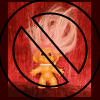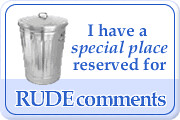Sunday, August 10, 2008
Case# 33 You've Got H@te Mail!

Remember the time when new netizens were discovering the joys of e-mail and chat? When we watched Meg Ryan in You've Got Mail log on and send messages to Tom Hanks. That was cool, way back in 1998, when that film was released. It explored the concept of what happens when the virtual world and the real world intersect at some point.
All that is old hat now. We send emails, we chat, we message, we scrap, we follow each other on Twitter, we scribble on Facebook's wall. We have SecondLife. The possibilities are endless. Your gmail inbox could be an excellent pointer. "Where are you now? I'd like to add you to my travel network”, says one mail. “XXX added you as a friend on Facebook” says another. There are join-us requests from at least three other social networking sites. And then, some blog comments that you have to moderate. So, cleaning the inbox could well take up an hour or two of your working day. All thanks to social networking. We live in an over-connected world, you see. Everyone's connected to everyone else and their cousin, thrice removed.
So, what's wrong with being connected? Nothing, except that we tend to lose perspective on who's a friend, who's not, and how much of our emotional investment needs to go into all this. Benign, harmless scraps, blog comments and messages are still tolerable. All you need to do is hit the delete button. But then, what about hate? What about those comments that hurt? What happens if there’s a sensitive person on the other end, who takes the hate personally?
Out of sheer curiosity, I log on to my Orkut account, and check out the hate communities. There are harmless "I hate to wake up early" to "I hate rain"communities. Soon, it turns ugly. And scary, if one may add. Take "Kill me, I'm fed up of my life" It had a whopping 3,000 members when one last checked. There's “Guns n Guts”, there's “I hurt myself; so you can't” with 7,000 members.
A web of distrust
One of the communities even suggests various methods to commit suicide. This community has a whopping 2,000 members at last count. Isn't this hate reflective of society itself? Surely, something's gone wrong somewhere.
According to psychologist Sonali Nag of the Promise Foundation, "Hate is a fundamental human emotion. As most other emotions, it is neither negative nor positive. It could be generated in response to something strongly repugnant to oneself and one's values. It could also be born from a sense of inadequacy. Both forms are seen on the Internet. It provides a screen to one's identity and offers a medium to express emotions with lower levels of restraint. ‘Snarking’ is an example of using the anonymity that the Internet provides to be snide and unrestrained in one's responses to someone else's postings. I would suspect that if one examined the personality of a 'snarker', one would find a sad, unfulfilled and frustrated person hiding behind his or her snarks."
There are hate communities directed at individuals and some very respected personalities at that. And then, countries. There was legal trouble when a ‘We hate India’ community was set up on a social networking site.
Omar Abdullah’s ‘alvida’
Social networking was also held responsible for the death of 16-year-old Adnan Patrawala from Mumbai, who was kidnapped and murdered by his Orkut friends. While social networking sites and blogs are excellent platforms for celebrities like an Aamir Khan or an Amitabh Bachchan to put across their points of view, they also make them vulnerable to hate comments.
You only have to check out Ram Gopal Varma's blog to see the kind of comments his posts elicit. But RGV blogs on, undeterred, responding to his readers sharply. But, then, it could get very serious.
Take the case of politician Omar Abdullah, who used the blog http://jknc.org/blog/ to air his views on Kashmir. He started his blog in mid-April, but by August, the comments and the hate got to him. His last post, titled 'Alvida' says it all. Sample this:
"Last night as I finished my last post I realised that I was filled with dread at the heap of personal abuse I was expecting when I logged on this morning and I was not wrong. We truly are a bunch of intolerant people. We want to be heard but do not have the strength to hear, we want to have an opinion but do not believe anyone else is entitled to one. So after almost 42 posts from me and more than 900 comments from all of you I am signing off and I will not be coming back."Faceless dread
A clear case of cyber harassment. The nature of the Internet, as it is evident now, is that it is an open, free world, where everyone has the right to vent their views, or form communities without much social responsibility. The very fact that the bully is a faceless, unknown person, adds to the helplessness of the victim. Terror too, has spread its scary shadows on the Internet. Terror mails are sent from random IP addresses. As recently as September 2008, newspapers reported that a community called 'Indian Mujahideen' was banned from a social networking site, following the blasts in Delhi.
A presentation on 'Tracking terrorists in cyber space' made by J Prasanna, an Information Security Consultant, at a seminar organised by Digital Society Foundation of India, in Bangalore, acknowledges that most terrorists and spies indeed use the Internet. They use the Internet to leave a message on a website like orkut, Linkedin or a matrimonial website that looks normal. Only they understand where to look and what to read and it's difficult for others to find out. This is called a covert channel. Also, terrorists use anonymous proxy (with encryption) to transmit messages.
So, do we regulate the internet?
According to Na Vijayshankar, cyber law campaigner, the police are supposed to monitor any anti-social activities in society and can take action on their own. Vijayshankar, who is also the Chairman of the Digital Society Foundation of India, says the organisation proposes to act as a vigilante unit. He points out that his organisation even filed a PIL in connection with denigration of Gandhi on You Tube. "I personally try to keep the police informed. I strongly feel the police should maintain contact with voluntary organisations to act as cyber informers."
But does this not infringe upon freedom of expression and privacy? Agrees Na Vijayshankar, "It is a fact that sometimes privacy interests conflict with law enforcement."
However, Naavi cites a India Supreme Court judgment, which says “that the person’s ‘right to be let alone’ is not an absolute right and may be lawfully restricted for the prevention of crime, disorder or protection of health or morals or protection of rights and freedom of others.”
During the seminar on Privacy Rights and Data Protection in Cyber Space, he expressed the need for balancing the Privacy and Data Protection legislation with law enforcement and suggested that the forum would collect the opinion of experts and forward it to the government for necessary action when the Personal Data Protection Bill 2006 and ITA Amendment Act Bill would be taken up for discussion in the Parliamentary session.
“What the ITA 2000 fails to protect are cases such as 'cyber stalking' where privacy intrusion through e-mails or SMS messages creates problems for individuals. If such messages can be brought under "Obscenity" then it may be covered under Section 67 of ITA 2000. If it is indecent or threatening, it may be brought under IPC. This is essentially the protection that is available,” he points out in his presentation.
However, there is the issue of what constitutes privacy rights. When the police on a crime trail end up on a social networking site , there are commercial interests that try to block the police from accessing information which may be vital to solving the crime. Often the defense put up by the sites is that the information is protected by the ‘Privacy rights’ of someone else or that they are to be treated as ‘Intermediaries’ and should not be harassed, explains Naavi.
Which brings us back to that old question of freedom and responsibility. Particularly so, with reference to democracies, where one’s rights cannot be divorced from one’s responsibilities. Where there’s freedom, there’s responsibility. Now, if only those hate mongers understood.
Impact on children
As with all other aspects of helping children learn to live life completely, shielding them from cyber bullying is not an effective answer. An emotionally secure home environment that allows exploration and experimentation constantly backed up by support and introspection, would help them develop strong identities. A strong, self-accepting identity, would neither bully or be bullied, the psychologist explains.
The bullies and their victims
- In March 2007, high-profile technology blogger Kathy Sierra of the United States became a victim of cyber bullying. She received anonymous death threats on her blog and violent comments were made against her. Kathy was so scared that she stopped blogging. The incident triggered a movement in cyberspace, and hundreds of bloggers reported to have been victims of cyber bullying at some point in their online lives. An Anti- Cyber bullying Day was observed on March 30 that year, in protest.
- Another American citizen, Megan Meier, a 13-year-old girl committed suicide in October 2006, when personal comments on her looks and appearance got to her on a social networking site.
- Not many Indian bloggers would have forgotten the vicious personal comments and washing of dirty linen on the blogosphere, when a noted youth blog (youthcurry.blogspot.com) had a post about a management institute.
- Ironically, the Internet is also an excellent resource for parents who are worried about their children becoming targets of vicious attacks. There are websites dedicated to cyber bullying. Some of them include: http://www.cyberbullyalert.com/blog/ stopcyberbullying.org.
According to psychologist Sonali Nag, “It is an extension of the bullying that seems to be integral to the human predicament, be it on the school playground or between countries. The only difference between the school bully and the Internet bully, perhaps is that anonymity allows the cyber bully an easier chance of getting away. The bully is usually a coward who melts away when confronted.
Here again low self-esteem and deep feelings of inadequacy seem to characterize the bully. Interestingly though, the bullied sometimes, want the relationship with the bully to continue. For the price of being bullied, they gain the reward of being the bully's protege and of being protected by the bully. However, for those who want to be released from this form of abuse, the bullied can be empowered to stand up to a bully.
FROM
Labels: attacks, bullies, cyberstalkers, emails, harassment, hate, slander, smear campaign, threats, trolls
Agent's Notes for: 33 You've Got H@te Mail!






